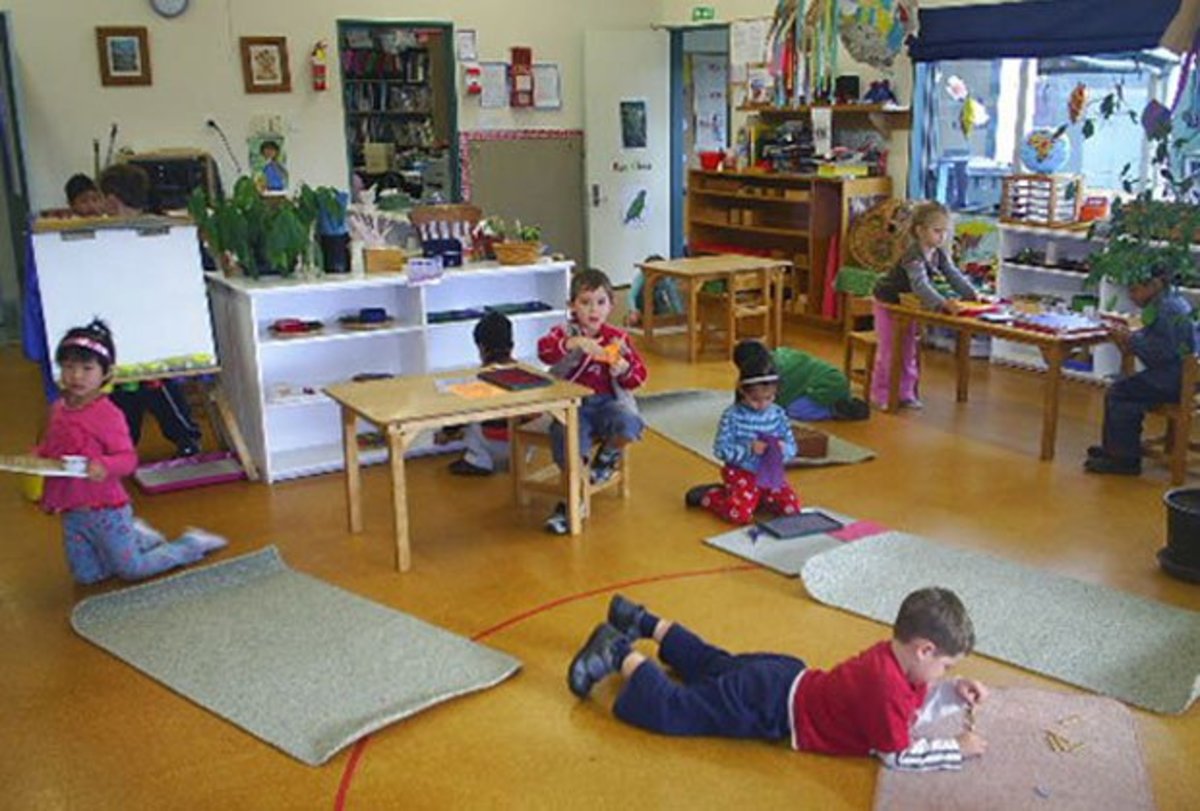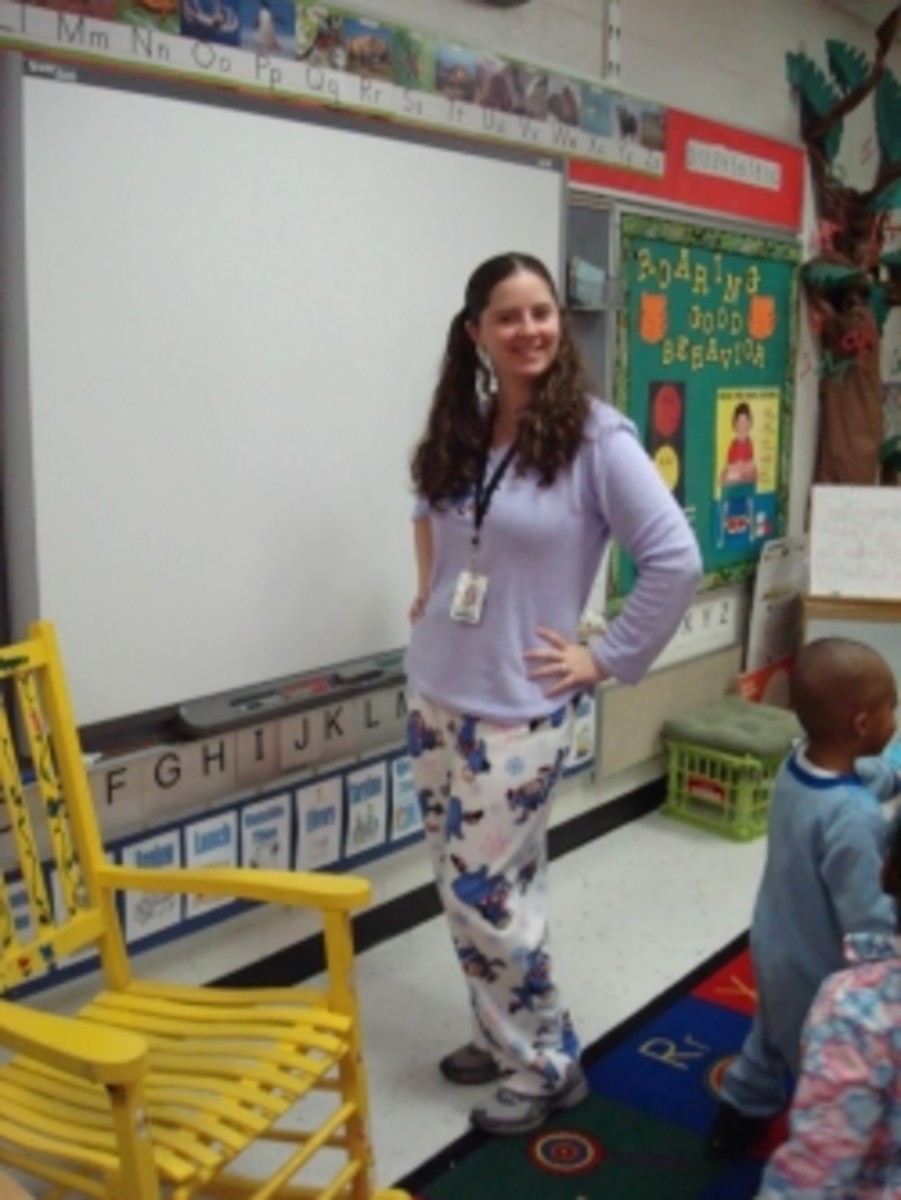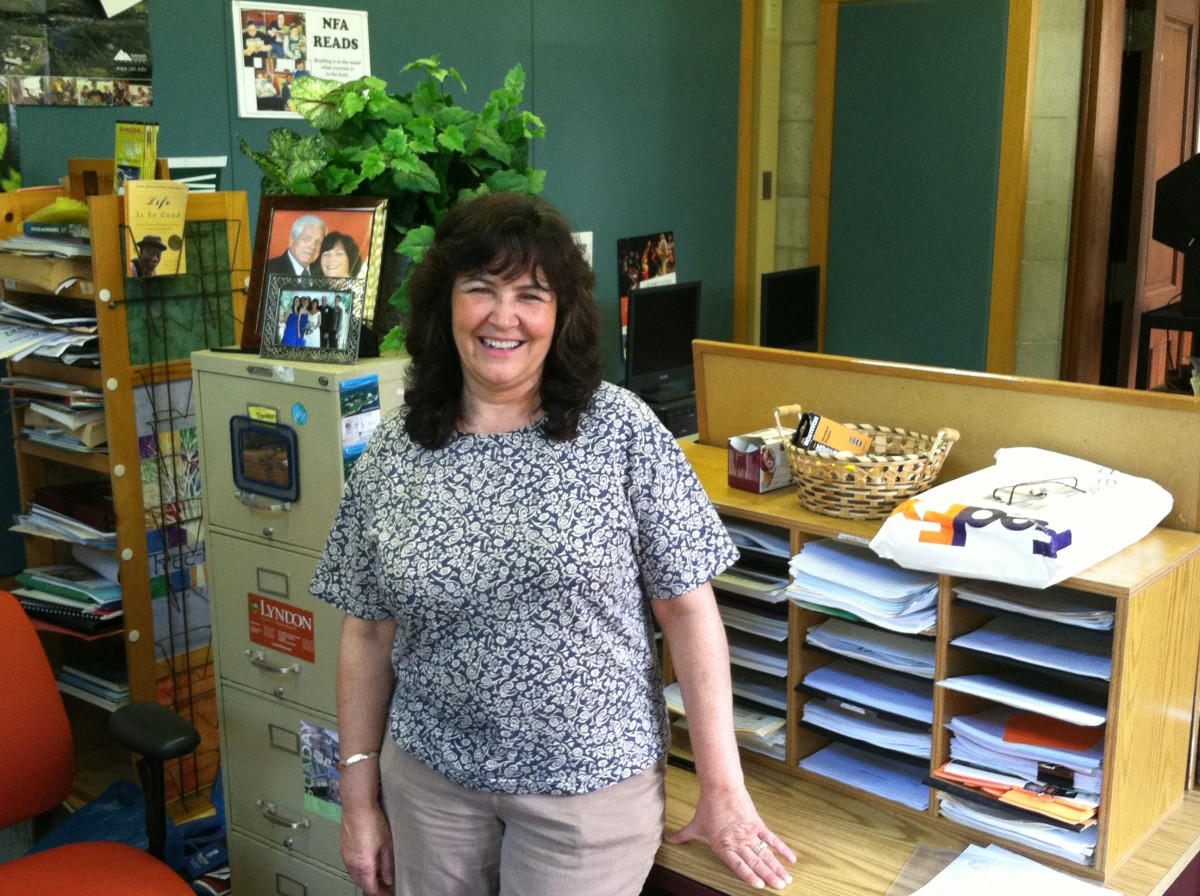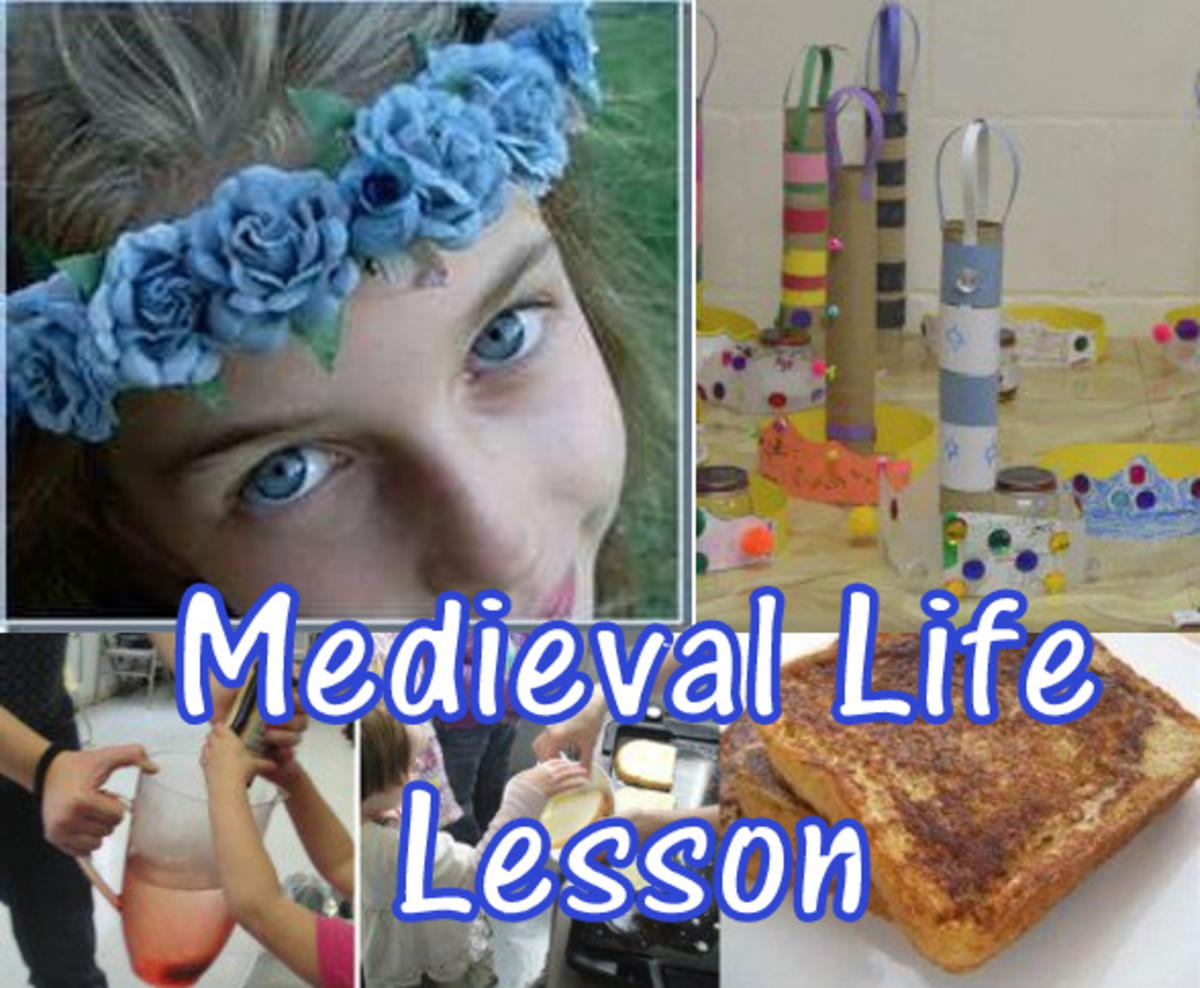Teaching in the Early Years - Group Work
Intro
The incorporation of many different pedagogical approaches, such as play and outdoor learning, is crucial for effective teaching but one valuable approach to be considered is collaborative group work which can be adapted to any environment. Through collaborative group work children learn and explore many aspects of the curriculum with the help and support of their peers. It also fits into the learning theory of social constructivism and is supported as an approach by the Scottish Government.
Working cooperatively
The Social Constructivist theory claims our understandings originate in social interaction so there is a role for others in individual’s construction of knowledge (Vygotsky 1978). Within this Vygotsky presents the idea of the ‘zone of proximal development’ which is the ‘difference between the child’s actual level of development and the level of performance that he achieves in collaboration’ (Vygotsky, 1978, p.209). Adults or peers are needed to ‘scaffold’ children’s learning within their zone of proximal development to the next stage (Wood et al. 1976). Co-operative learning groups address students' needs for scaffolding during unfamiliar learning and problem-solving activities; with the support of other’s students are more likely to achieve goals (Garibiner; Dunlap, 1995). Piaget showed that through cooperation children begin to form their moral judgement and begin to alter their behaviour to the rules of the group and later voluntarily self-regulate (Vygotsky 1978). Thus, children learn to socialise through these ‘communities in practice’ as experts’ model how to become members of the group through learning the tools such as appropriate communication (Lave, 1988). Through group interactions children become aware of the thinking of themselves and others and thus develop ‘theory of mind’ (Larkin, 2006). They also become agents in their own learning and their social and emotional interactions (Gmitrova, 2009). Cooperation also promotes greater long-term retention, motivation, creative thinking and positive attitudes towards the task and school (Johnson and Johnson 2009). Grabinger and Dunlap promote group work which encourages; investigation within realistic contexts, growth of student responsibility, collaboration and higher order thinking (1995). Learning to work cooperatively in a group is a crucial life skill and can engage students in a continuous collaborative process of building and reshaping understanding through experiences (Grabinger, Dunlap, 1995). This reflects that learning is holistically connected to the social and emotional context (Lebow 1993).
Thinking and Reasoning
Students who understand the underlying concepts of knowledge are better able to transfer knowledge to solve problems than children who memorise the formulas (Robertson, 1990). Group work supports understanding of concepts which is an important skill as Grabinger and Dunlap claim we need to make children’s thinking and reasoning processes visible to enable children to take ownership of their learning (1995). This is metacognition and it is important for certain types of learning such as problem solving. Links have been shown between metacognition and academic attainment in many curriculum areas such as reading, maths and science (Larkin, 2006). As children’s confidence in groups increases so their metacognitive processing becomes overt and influenced by their peers (Larkin, 2006). Students must take responsibility for their learning if they are to develop their knowledge (Grabinger; Dunlap, 1995). In the early years setting you will find many pedagogical practices such as didactic interactions, modelling, questioning, scaffolding etc. which children can do in group work (Stephen, 2010). It is through interacting with others that children become motivated to become aware of their cognitive processes and can structure their knowledge through argumentation, structured controversy, sharing and testing ideas and can mutually bridge meaning (Wertsch, 1978; Garibiner, Dunlap, 1995; Rogoff, 2003). Children learn and achieve greater when they have access to the generative power of those around them and through ‘co-operative talking’ groups achieve success (Fisher, 2005). Collaborative groups are a form of active learning as it engages children in the process or constructing understanding (Hohmann and Weikart, 1995). The Scottish Government also ‘recommends that learners work co-operatively and the requirement for collaborative learning is evident in CfE outcomes’; collaborative learning is advocated throughout Scottish policy documents (McKechan; Ellis, 2014 p.477). Collaborative group work also fits well with the four capacities; successful learning (learn as part of a group), Confident individuals (group work can increase confidence), responsible citizens (working together for a shared goal), effective contributors (children learn to contribute to group tasks) (Scottish Government, 2008). McKechan and Ellis also claim that teachers considered the collaborative group work to fit well with the Assessment for Learning Initiative (2014). Through collaborative group work children; learn from each other, use exploratory talk to deepen understanding, develop problem solving skills and strategies, learn to take turns, see other’s points of view and build relationships (Fisher, 2005).
Relationships
Using collaborative group work with children does change the dynamic of the classroom. The teacher using this technique needs to build strong relationships with the children so they are comfortable taking control of their own learning and making mistakes. The teacher is positioned as an organizer and potential source of information as they plan opportunities, monitor and support the group learning (Crowther, 1997; Fisher, 2005). Children must be taught how to behave in groups to support each other, stay on task, resolve conflict etc. The teacher will need to model appropriate language, practices, encourage, ask questions and verbally interact with the children so that they adopt this behaviour (Siraj-Blatchford; Sylva; Muttock; Gilden; Bell, 2002). Children need to develop their resilience to talk through their conflicts which also requires clear discipline policies so children understand the rules and expectations (ibid, 2002). Early years practitioners place priority on the development of positive attitudes to learning, self-confidence and independence which group work supports (ibid, 2002). Settings which see cognitive and social development as complementary achieve the best profile in terms of child outcomes; these are inherent to group work (ibid, 2002). Effective group work is more likely to happen when everyone understands the purpose, task and contribution expected as children need clear success criteria so they know what the teacher expects (Fisher, 2005). Forming the habit of explaining success criteria is crucial for teaching through collaborative group work as the teacher must check children understand what is expected. One way of doing this is to ask, ‘what strategies can we use?’ with the children offering suggestions before being set to task. This also relies upon the teacher having modelled the use of effective strategies and given them labels for the children to differentiate their uses in practice.
Teachers Role
The teacher must think about group size, composition and management. Sustained shared thinking is most likely to occur when children are interacting one to one (Siraj-Blatchford; Sylva; Muttock; Gilden; Bell, 2002). I have seen paired group work in board games, number fans, whiteboards (tricky word spelling and maths) etc. in which the teacher emphasised the importance of helping and explaining clearly their reasoning when offering suggestions to one another. Fisher puts forward the ’rule of four’ size which allows for maximum communication though generally groups range from three to five (2005). I have seen group work in which the class is split into small groups and given a tray in which to form a fairy garden which they planned and designed together. At the end of each day groups were rewarded with items for their tray depending on their successful behaviour and cooperation as a group. This encouraged the children to work cooperatively and to begin resolving conflicts themselves. Learning in large groups is also valuable as the class is a community and should encourage support (Fisher, 2005). One large group activity I have experienced had the whole class on the carpet with the teacher telling a story he created in which all the children were characters. At the point of problems in the story the children offered solutions. When there was consensus for the best solution the teacher added it to the narrative. The above group activities were all mixed-ability groupings which Fisher believed benefits the widest range of pupils, though opportunity should be given for similar ability to work together too (2005). The only similar ability group work I have experienced is with guided reading with an adult present in the group. This seemed to be primarily due to practicality as those of similar abilities were reading the same book but it also allowed for observation and assessment.
Problems
Although there are many benefits of collaborative group work it is not without its problems. It can be difficult to assess individual contributions within a group while simultaneous assessment can also be time consuming and the behaviour of the group may change when being observed (Fisher, 2005, McKechan; Ellis, 2014). However, assessment structures are imbedded in collaborative learning as it allows for self, peer and teacher formative assessment but it can prove difficult to accumulate assessment evidence while supporting learning (McKechan; Ellis, 2014). Care must be taken to ensure that nobody is taking a back seat and allowing others in the group to do the work and to ensure that barriers to successful group work (such as aggressive, attention seeking or withdrawing behaviour) are dealt with effectively. Changing groups regularly and having rules for group work such as ask the group first should act to prevent some of this behaviour. Although mixed ability grouping benefits most children, high ability groupings produce the most understanding and performance so high-ability children need opportunity to work together and efforts should be made to ensure they are not doing tasks that are too easy; below their proximal zone of development (Fisher, 2005). As Topping said, ‘just because children are working in a group, it doesn’t mean they are working as a group’ (1989:488). There are some simple steps to help with these problems such as having the class discuss what makes a good team, starting by working in pairs to ease children into group work, giving everybody in the group a set role etc. (Fisher, 2005). Another issue with group work is the noise level it produces within the classroom. A lot of noise can distress some young children as well as disrupt others in the school. Teachers need to find ways to moderate noise levels to allow group work to continue as classrooms which call for silence and aim to prevent distractions alienate pupils from one another (Topping, 1989). When working in groups there is also a chance that children might go off topic. Going over the success criteria with the children will help here as will making sure there are clear goals throughout with a checklist of tasks. In relinquishing control of the learning to the children themselves there is a degree to which the teacher cannot be sure what the learning will be and they can only hope that they have built a strong relationship and ethos in the classroom so children will be motivated to stay on task. Fisher points out that; grouping children together is only justified if it helps promote more effective learning as sometimes ‘they would work better on individual or paired tasks, sitting individually or in pairs’ (2005;98). So, teachers need to be aware of when group work is beneficial and when it isn’t.
Conclusion
In conclusion, collaborative group work has many benefits and uses and is even promoted by the Scottish Government as a tool for successful learning. Children are motivated to learn when working with others and learning social skills is built into this cognitive learning. Collaborative group work also enables metacognition more than some other forms of learning. Despite this, it does mean that the teacher can come into issues with observing and assessing individuals and controlling the class through this method. Teachers must remember that the focus of the classroom should be on the benefits to the children rather than the issues it might cause themselves and that organisation is key. Although there are many benefits to group work it does need to be balanced out with other pedagogical approaches and assessment types. It is a pedagogical approach I aspire to utilising in the classroom regularly along with other pedagogical approaches and I hope, with experience, I will be able to judge when it is appropriate and in what form and group size. I also hope to accumulate ways to help those children who need extra support when tasked to work in groups so that nobody feels too uncomfortable.
References
Crowther, F. (1997). Teachers as leaders ‐ an exploratory framework, International Journal of Educational Management, 11:1, pp.6-13,
Fisher, Robert. (2005) Teaching children to learn. Cheltenham: Nelson Thornes
Gmitrova, V. (2009). Children’s Play Preferences: implications for the preschool education. Early Child Development and Care. 179:3. Pp. 339-351
Grabinger, R. Scott; Dunlap, Joanna C. (1995) ‘Rich environments for active learning: a definition’. ALT-J, 3:2 5-34.
Hohmann, M; Weikart, D. P. 1995. Educating Young Children: Active Learning Practices for Preschool and Child Care Programs. Ypsilanti, MI: High/Scope Press
Larkin, S. 2006. Collaborative Group Work and Individual Development of Metacognition in the Early Years. Research in Science Education 36:1 7-27.
Lave, J. (1988). Cognition in practice: Mind, mathematics, and culture in everyday life. Cambridge, England: Cambridge University Press
Lebow, D. 1993. Constructivist Values for Instructional Systems Design: Five Principles Toward a New Mindset. Educational Technology Research and Development. 41:3, pp. 4-16.
McKechan, S; Ellis, J. 2014. Collaborative learning in the Scottish Curriculum for Excellence: the challenges of assessment and potential of multi-touch technology. Education 3-13. 42:5 pp. 475-487.
Robertson, W.C. (1990), 'Detection of cognitive structure with protocol data: predicting performance on physics transfer problems', Cognitive Science 14:1, pp. 253-80.
Rogoff, B. 2003. The Cultural Nature of Human Development. Oxford, England: Oxford University Press.
Scottish Government. 2008. Curriculum for excellence: Building the curriculum 3 – a framework for learning and teaching. Edinburgh, UK: Scottish Government.
https://www.education.gov.scot/Documents/btc3.pdf
Stephen, C. (2010). Pedagogy: The silent partner in early years learning. Early Years, 30:1, pp. 15-28.
Siraj-Blatchford, I; Sylva, K; Muttock, S; Gilden, R; Bell, D. (2002) Researching Effective Pedagogy in the Early Years. (Research report RR356). Institute of Education, University of London.
Topping, K. 1989. Peer Tutoring and Paired Learning: Combining two powerful techniques. The Reading Teacher. 42-7. pp. 488-494
Vygotsky, L. (1978). Interaction Between Learning and Development. In Gauvain & Cole (Eds.) Readings on the Development of Children. New York: Scientific American Books. pp. 34-40.
Wood, D. et al. (1976). The role of tutoring in problem solving. Journal of Child Psychology and Child Psychiatry, 17: pp. 89−100








